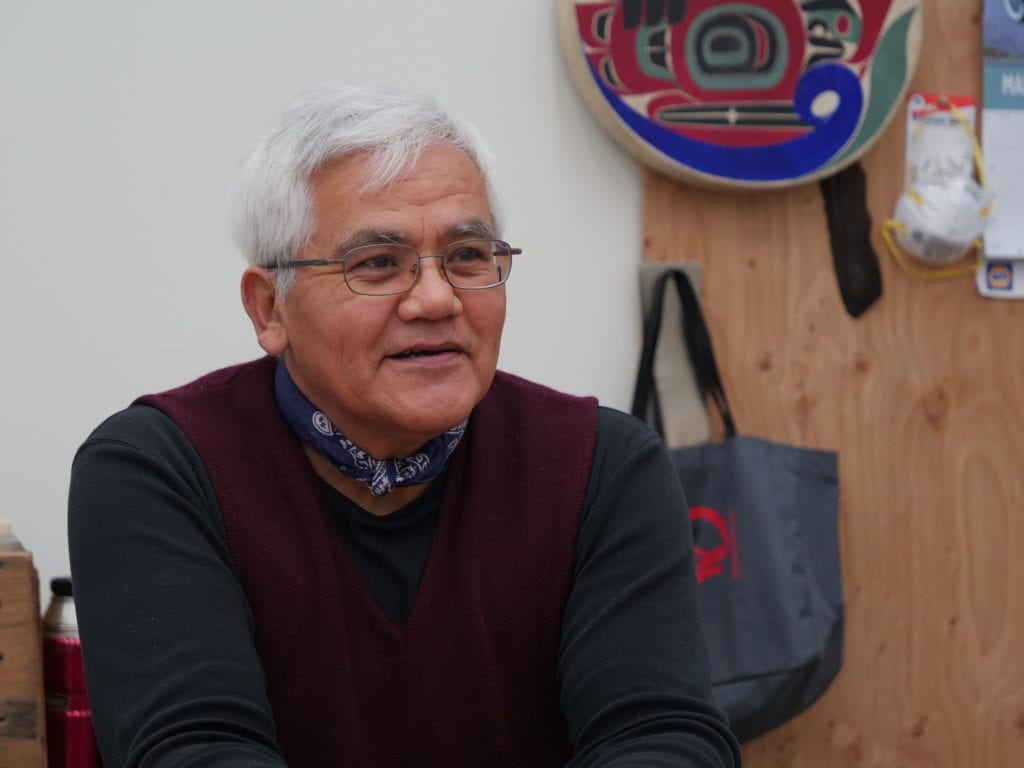
Tlingit master carver Wayne Price, renown for the artistry and precision of his work, is being honored at the Rasmuson Foundation’s 2020 Distinguished Artist. The recognition comes with a $40,000 award.
Born in Juneau, Price then grew up in Haines, where he began carving at Alaska Indian Arts as a teenager. During his lifetime, Price has restored and duplicated historic totem poles and structures and created numerous original designs. He has helped revive the knowledge and techniques needed to carve traditional oceangoing canoes, and taught traditional arts as a path to healing, sobriety and well-being.
Price is an associate professor of Northwest Coast Art at the University of Alaska Southeast in Juneau, where he teaches all elements of carving, including specific skills need to create canoe paddles, feast dishes and bentwood boxes.
“Wayne Price represents the best of Alaska art and artist,” said Diane Kaplan, president and chief executive officer of the Rasmuson Foundation. “He’s preserved and replicated traditional Tlingit art with remarkable attention to detail. He creates his own designs in mediums from cedar to silver. And he is a mentor to the young, teaching ways to sobriety and good health. Build a canoe with Wayne and you’ll not only learn to carve, your life will be forever changed.”
Early in his career as a carver Price restored 26 historic totem poles at the village of Saxman.
His other notable works include duplication of the famous Chief Shakes House posts in Wrangell and restoration of a totem pole in Auke Bay that was carved with support of the old Civilian Conservation Corps.
His body of original work includes totem poles at Thunder Mountain High School and Tlingit & Haida Vocational Technical School in Juneau, house posts for the U.S. Forest Service building in Auke Bay, items in collections of the Alaska Native Heritage Center in Anchorage and Denali National Park Visitor Center, etched formline glass panels in downtown Juneau, and traditional texture adzing on clan house walls at the Sealaska Heritage Walter Soboleff building in Juneau.
Price taught himself to carve the traditional oceangoing dugout canoes by observation of surviving examples and experimentation and became a preeminent expert in the form.
He also designed and carved two 40-foot dugouts for traditional Native repatriation ceremonies at Glacier Bay National Park in 2016. Another of Price’s canoes is on permanent display at the Hokkaido Museum of Japan.
A short documentary on his work can be viewed on the foundation’s special web feature, at rasmuson.org/arts/individual-artist-awards/distinguished-artists/#2020.





